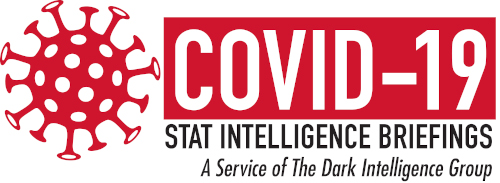New York contact tracing program becomes a success story after initial failures. Three strategies considered essential
New York City (NYC) was an early epicenter of the COVID-19 pandemic, with almost half a million cases to date and over 30,000 recorded deaths attributed to COVID-19. NYC launched a contact tracing program in early June 2020, called the NYC Test and Trace Corps, as the pandemic began to peak locally. This contact tracing program initially encountered some barriers that made the program less effective, but the development of this program over the last four months has provided valuable lessons.
The initial roll out of the contact tracing program in NYC was fraught with difficulty. At the beginning of the program, statistics from the first few weeks showed that only 35% of COVID-19 positive individuals completed the program’s intake process and provided useful information to the tracers. At the time, it was reported by the New York Times that the program was “limited by a low response rate, scant use of technology, privacy concerns and a far less sweeping mandate than that in some other countries.”
While the NYC Test and Trace Corps’ beginnings faced significant barriers, this contact tracing program has more recently seen success, according to officials there. The city’s goal with the contact tracing program has been to reach 90% of cases and to have 75% of all cases complete the program’s intake process. This process involves the tracer making contact with a COVID-19 positive individual, having them agree to isolate, agree to be monitored for 14 days, and provide contact details for those they have been around who may have been exposed.
Recent data from the NYC health system that oversees the Test and Trace Corps shows that the city’s goals are now being met, with 91% of all new COVID-19 cases being reached by tracers, and 76% of new cases completing the intake process. “COVID-19 demands an all-of-government response,” Jackie Bray, Deputy Executive Director of Test and Trace Corps told Modern Healthcare. “What we were able to bring to bear in New York over the last three months has been an all-of-government response to our testing, tracing and isolation program.”
The Test and Trace Corps didn’t hit its stride until mid-July, Bray said, when the program’s leadership realized that changes were needed to optimize outreach efforts. There are three key strategies that have been identified as helping the program to achieve success. These include:
- Asking clinicians to tell those positive for COVID-19 that they will be contacted by a contact tracer;
- Enlisting tracers from the specific communities of the people being contacted; and
- Providing tracers with training that includes facilitating awareness of implicit biases and cultural considerations.
These strategies are considered to have been essential for improving the contact tracing program’s success.
Clinical laboratory leaders should continue monitoring progress with contact tracing programs. Knowledge of the model and strategies provided by NYC may be helpful in working with community partners.
Clinical laboratories stand to benefit from well-run contact tracing programs, as these programs identify and contact people who may have unknowingly been exposed to a COVID-19 infected individual. Reaching out to exposed individuals and raising their awareness about the potential for infection can augment COVID-19 test volumes.
As more contact tracing systems and technologies are used, clinical laboratory directors and pathologists will want to monitor COVID-19 lab test demand patterns in their respective regions and locales. According to Wired, a publication focusing on the effects of emerging technologies, “Any effective contact tracing will require testing for Covid-19 to ramp up far past current levels.”
Lab leaders should also seek out partnerships with their local health departments to support community-based contact tracing programs that promote public health. Such efforts may increase the demand for COVID-19 testing.

—By Caleb Williams, Editor, COVID-19 STAT
Related Resources:
Modern Healthcare: After bumpy start, NYC’s contact tracing program showing success
New York Times: N.Y.C. Hired 3,000 Workers for Contact Tracing. It’s Off to a Slow Start.







